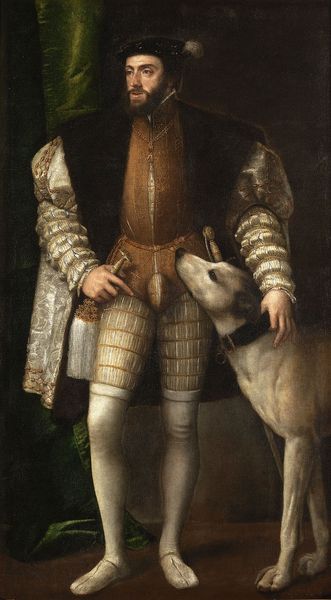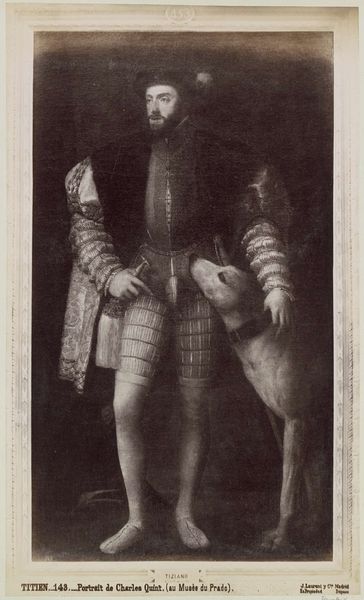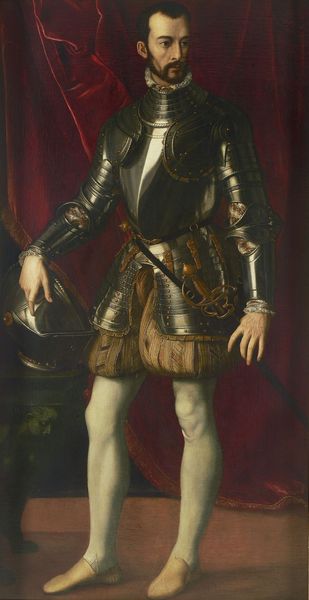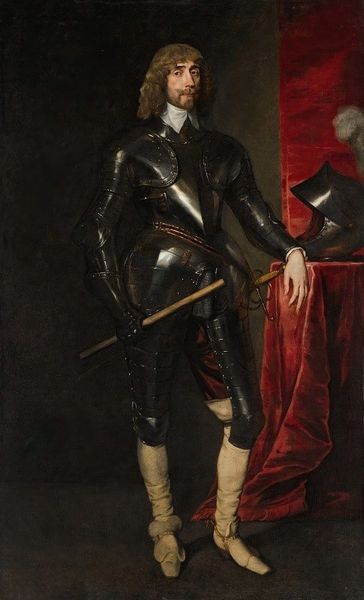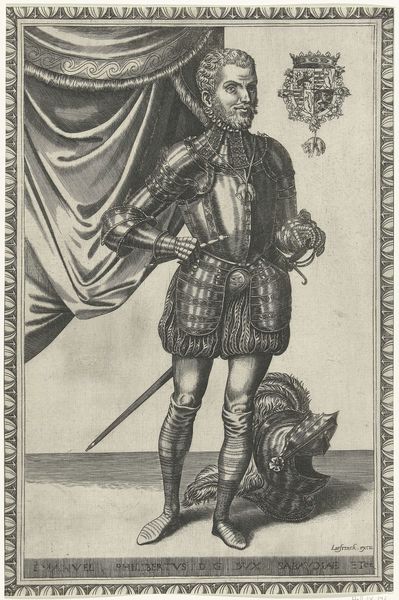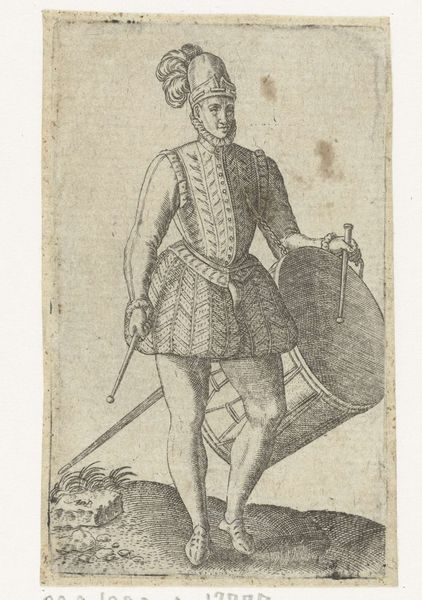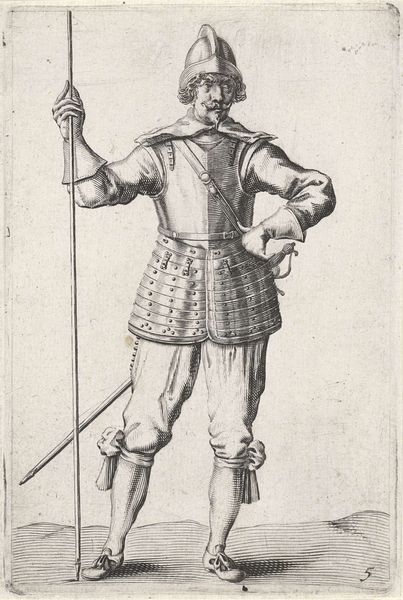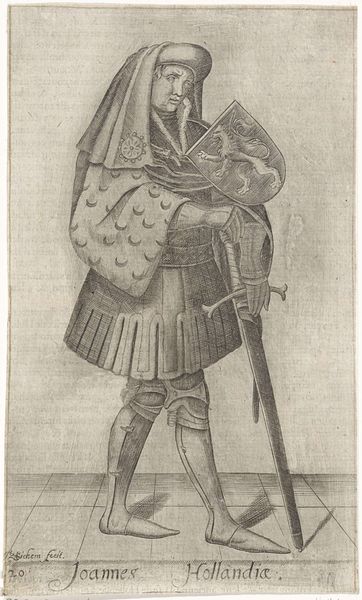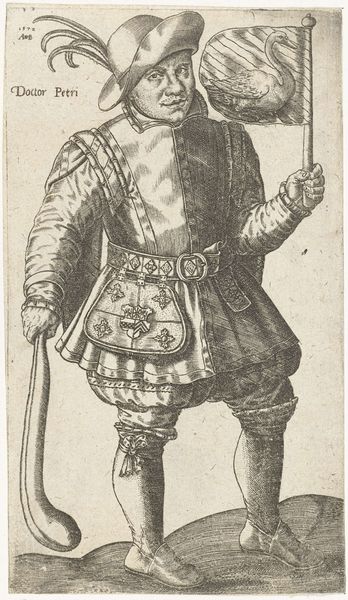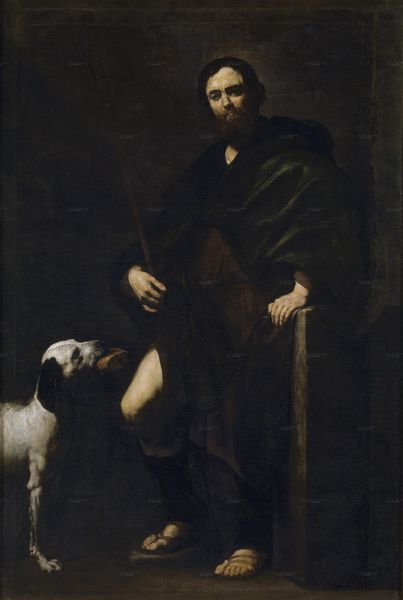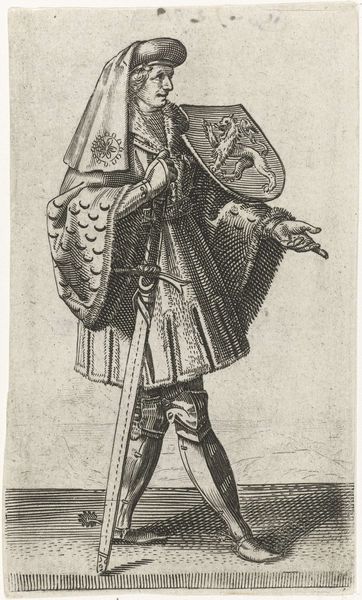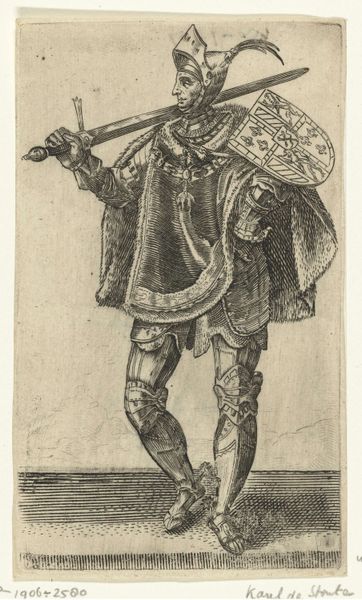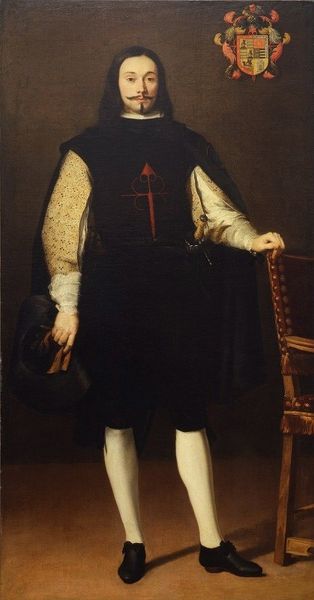
oil-paint
#
portrait
#
figurative
#
high-renaissance
#
venetian-painting
#
character portrait
#
oil-paint
#
oil painting
#
underpainting
#
genre-painting
Copyright: Public Domain: Artvee
Editor: Here we have Paolo Veronese's "Boy with a Greyhound," painted around the 1570s in oil. The somber hues lend it a dignified air, and the boy's gaze is quite arresting. How do you interpret this work, given its historical context and your own sensibilities? Curator: Arresting indeed. It whispers stories of Venetian opulence, doesn’t it? Veronese captures that glimmering fabric, those slightly ridiculous pantaloons... it's all so wonderfully, terribly aristocratic. And then you see the boy's eyes – is it boredom? A flicker of disdain? It's hard to say. He's tethered to privilege as surely as the greyhound is to him. What do *you* think the dog symbolizes here? Editor: Perhaps loyalty, a companion… something pure compared to the elaborate, restrictive clothes he wears? Curator: Perhaps. Or is it another possession, carefully bred for speed and beauty, like the boy himself? Notice how the muted colors seem to drain away the youthful playfulness we might expect. It almost feels as though Veronese is slyly poking fun at the whole spectacle. The sword hanging on the belt just completes this sense of staged dignity. Editor: I hadn't considered it that way. The greyhound, the sword, the fancy clothes... they are extensions of the boy's status. Curator: Precisely. It makes one question what it really means to ‘capture’ someone's essence in a portrait, doesn't it? Was the painting meant for celebrating status or something else entirely? Editor: Absolutely. This has completely shifted my perception; I now see more of the social commentary and less of the straightforward portrait. Curator: It’s always about peeling back the layers and searching beneath the surfaces. This is a starting point and something we both can consider!
Comments
No comments
Be the first to comment and join the conversation on the ultimate creative platform.
